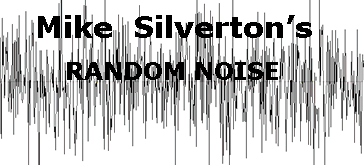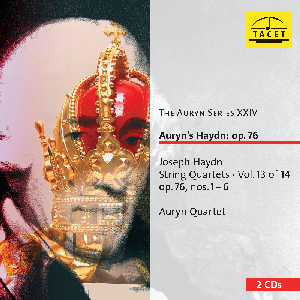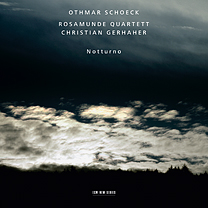Random Noise 25
|
Random Noise 25 Veblen Goods
|

I came across an interesting term in “All That Glitters,” an insider’s look at the jewelry trade in the June, 2010 issue of Harper’s Magazine. Thorstein Veblen (1857-1929), the author of The Theory of the Leisure Class, coined the expression “conspicuous consumption,” which in turn gave rise to “Veblen goods” as a descriptor, for hypothetical example, of a bauble a dealer is unable to sell for $25k but succeeds when he jacks the price up to $125k. Get it? It’s all the more desirable if it’s crazy-expensive. The article’s author, Clancey Martin, cites the hyper-prestigious Stainless Steel Daytona Chronograph, an $11.5k Rolex he estimates costing about $300 to manufacture. You pay for the SSDC months in advance of delivery. It’s that exclusive. Audio cables, anyone? Foul! you say. Below the belt! Well, yes. A hand-made, diamond-encrusted tourbillon tells time no better than a battery-powered plastico. Noon is noon. As all proper audiophiles know, audio cables convey impressions the differ from slight to obvious. That said, if you came to me with $50 speaker cables claiming they’re the best you’ve ever tried, and you’ve tried dozens, I’d be skeptical. Perhaps even reluctant to put them in my system. They’re too cheap. You’d need to quadruple the price at least. In an environment where $5k phono pickups reside in perfect harmony with similarly priced tone arms, this is not an untoward expectation. In search of the perfect audiophile What might a shrink say about us audiophiles? –– a shrink, that is, who is not himself an audiophile. Might he say we are more obsessive than most? Perhaps even driven? Normally these are attributes to which no one lays claim or aspires. “A better-sounding fuse haunts my dreams.” So what is it about this avocation that might justify, or less loftily, excuse our fixations, drives and desires? I refer to two-channel zealots, your reporter included, in our butt-wide sweet spots. The surround-sound, home-theater geek is another, probably better socialized creature. To remain with stereophony, what defines the perfect audiophile? As I see it, he or the less frequent she is a broad-spectrum aesthete – a lover of disparate aural arts. And kind to children and small, helpless animals. First love and foremost, music. Genre is irrelevant. The issue is intensity. We identify the philistine for whom recordings operate as fuel for hardware by his answer to “What kind of music do you like?” “Oh, all kinds.” This is code for “Whatever makes my system sound great.” O, shallow, callow philistine! We must also love the art of recording. Without mediocrity against which to compare, how else would we recognize superb engineering? In my experience, some recordings are simply unplayable. Many sound good enough. Remarkably few sound great. And yet –– the fly in the ointment –– a heavenly recording of dirt-dull music in short order proves a bore. Except, perhaps, to our shallow, callow philistine. And for our third and final love object, a revelatory audio system. Componentry that sings to one’s soul is as much the fruit of art as science. *** “…music is a dream from which the veils have been lifted. –– Claude Debussy
TACET has been recording the splendid Auryn Quartet (Matthias Lingenfelder, Jens Oppermann, violins; Stewart Eaton, viola; Andreas Arndt, cello) in a survey of Franz Joseph Haydn’s string quartets, the first twelve which (Opp. 1 and 2), date from 1755-60, the last, Op. 103, No. 83, from 1802-3. A long and productive career, that. Indeed, Haydn stands as the Classical period’s Colossus despite his having been tucked away in leafy Hungary as a music-loving family’s in-house composer for the better part of his working life. Even so, his published music achieved such interest and respect among the cognoscenti that, now a free agent, he arrived in London a ready-made celebrity. Haydn observed that had he worked in Vienna rather than Eisenstadt and, later, Esterháza, he’d not have had the opportunity to develop his ideas independent of fashion. Composing in total comfort within the Classical Period’s aesthetic constraints, Haydn’s fame rests on his music’s good humor, dignified sentiment, faultless architecture and most all, its bottomless fund of surprises –– in short, a sense of freshness that transmits itself, unwilted, to this day. And that, of course, is the difference. While a journeyman composer may generally please, he rarely takes the sophisticated listener by surprise. Haydn’s inventiveness was another matter entirely. It helped that, in his service to the Esterházy family, he had at his disposal an orchestra’s worth of instrumentalists for working out ideas. The three quartets each of Op. 71 and Op. 74, together called Apponyi, take their handle from the count who commissioned them. To listen attentively to the music of Haydn’s maturity, you understand why Mozart and Beethoven so admired the older man. Having studied Haydn’s Op. 33 quartets, Mozart dedicated six of his own to the master. The two men actually played quartets in Mozart’s apartment, the lease-holder on viola, Haydn on violin. (If the impulse so drives you, by all means seek out the names of the two other players. The first reader to email the information gets to pay off my mortgage.) Little I’ve listened to these past few weeks has equaled the pleasure these performances deliver. The Auryn’s precision and soul –– attacks, intonation, interpretive depth and coherence –– spring to life in recordist Spreer’s able hands. The strings’ textures are as good as it gets. You are there, in the music. TACET 170 (Op. 71, Nos. 1-3) and TACET 169 (Op. 74, Nos. 1-3), distributed in the US bySpinningDogRecords.com.
A recipient of numerous awards, grants and commissions, Chaya Czernowin (b. 1957), a native of Israel who since age 25 has lived and worked in Germany, Austria, Japan and the United States, is a steadfast modernist with particular respect to her music’s uncompromising demeanor. Notwithstanding her many Hebrew titles, nowhere will the listener detect a hint of ethnicity, nationality, or indeed, any manner of musical discourse fashioned to please the tune-happy gallery. Hers is a take-it-or-leave posture that, in these aesthetically squishy times, goes against art music’s accessibility grain. Czernowin draws her inspiration and ammunition from a decidedly European avant-garde that has already made its historical place. In view of a fixed tradition and as something of an anomaly, her music sounds utterly fresh and, perhaps for some of you reading these words, challenging. I propose taking the plunge.
Because this is one of the most impressive large-scale recordings I’ve heard in quite a long time, I should mention and commend Producer Rainer Pöllman, Recording Supervisor Jens Schünemann, who also did the mastering, Recording Engineer Hajo Seiler, and Sound Technician Tobias Hoff. Thanks to a recording that succeeds splendidly in telling us so, the listener will recognize, almost immediately, that MAIM is huge in conception yet exactingly precise –uninhibited, yes, but exquisitely well crafted. The insert’s info page advises PLAY LOUD in big, bold letters, and you should. The music’s engaging turns run from mice-scamper to rock-slide, and the recording gets it all, every spacious squeak and roar. For the music lover who despairs for an art form’s present-day timidity, MAIMshould serve as the most bracing of tonics (no pun intended). Recommended with no less enthusiasm to the chronically curious.
|
Stereo Times Masthead
Publisher/Founder
Clement Perry
Editor
Dave Thomas
Senior Editors
Frank Alles, Mike Girardi, Russell Lichter, Terry London, Moreno Mitchell, Paul Szabady, Bill Wells, Mike Wright, and Stephen Yan,
Current Contributors
David Abramson, Tim Barrall, Dave Allison, Ron Cook, Lewis Dardick, John Hoffman, Dan Secula, Don Shaulis, Greg Simmons, Eric Teh, Greg Voth, Richard Willie, Ed Van Winkle, Rob Dockery, Richard Doran, and Daveed Turek
Site Management Clement Perry
Ad Designer: Martin Perry



 Andreas Spreer’s TACET is a German label devoted to in the main to beautifully recorded chamber music. Two photographs on a TACET tray card tell a story. On the left, a 1740 Guarneri viola; on the right, a Neumann U47 microphone, the first iteration of which appeared in 1948. For duly reverent recordists, the U47 is worth its weight in saints’ jawbones. Though nowhere stated, presumably the pictured U47, identified as No. 5599, is the mic Spreer is using for some of the most luminously performed and produced string quartets it’s been my pleasure and privilege to hear. For example:
Andreas Spreer’s TACET is a German label devoted to in the main to beautifully recorded chamber music. Two photographs on a TACET tray card tell a story. On the left, a 1740 Guarneri viola; on the right, a Neumann U47 microphone, the first iteration of which appeared in 1948. For duly reverent recordists, the U47 is worth its weight in saints’ jawbones. Though nowhere stated, presumably the pictured U47, identified as No. 5599, is the mic Spreer is using for some of the most luminously performed and produced string quartets it’s been my pleasure and privilege to hear. For example: Everyone’s heard of Haydn. It’s the rare music lover who’s familiar with the Swiss composer Othmar Schoeck (1886-1957). Schoeck’s instrumental music elicits scant interest these days. His reputation, such as it is, rests on vocal settings of poetry, in the present instance with a chamber ensemble. Notturno / Five movements for string quartet and voice on poems by Nikolaus Lenau and a fragment by Gottfried Keller, op. 47 (ECM New Series 2061) reminds me in the most persuasive terms why Schoeck meant so much at an earlier period in my life. In the main the music is rather melancholy and pensive – moods that shine with an inner amber glow. Among the work’s great strengths is the masterful interleaving of strings and vocal line, its late-Romantic sonorities shading at long moments into Expressionistic angst and élan. Baritone Christian Gerhaher calls to mind the great Dietrich Fischer-Dieskau, one of Schoeck’s strongest proponents. The Rosamunde Quartet’s feeling for the music’s atmospherics is similarly impressive (Andreas Reiner, Diane Pascal, violins; Helmut Nikolai, viola; Anja Lechner, cello). The sound, otherwise first-rate, is ever so slightly upwardly tipped: an edge to the strings and voice when the going gets forceful. But don’t let that put you off.
Everyone’s heard of Haydn. It’s the rare music lover who’s familiar with the Swiss composer Othmar Schoeck (1886-1957). Schoeck’s instrumental music elicits scant interest these days. His reputation, such as it is, rests on vocal settings of poetry, in the present instance with a chamber ensemble. Notturno / Five movements for string quartet and voice on poems by Nikolaus Lenau and a fragment by Gottfried Keller, op. 47 (ECM New Series 2061) reminds me in the most persuasive terms why Schoeck meant so much at an earlier period in my life. In the main the music is rather melancholy and pensive – moods that shine with an inner amber glow. Among the work’s great strengths is the masterful interleaving of strings and vocal line, its late-Romantic sonorities shading at long moments into Expressionistic angst and élan. Baritone Christian Gerhaher calls to mind the great Dietrich Fischer-Dieskau, one of Schoeck’s strongest proponents. The Rosamunde Quartet’s feeling for the music’s atmospherics is similarly impressive (Andreas Reiner, Diane Pascal, violins; Helmut Nikolai, viola; Anja Lechner, cello). The sound, otherwise first-rate, is ever so slightly upwardly tipped: an edge to the strings and voice when the going gets forceful. But don’t let that put you off. 




Be the first to comment on: Random Noise 25